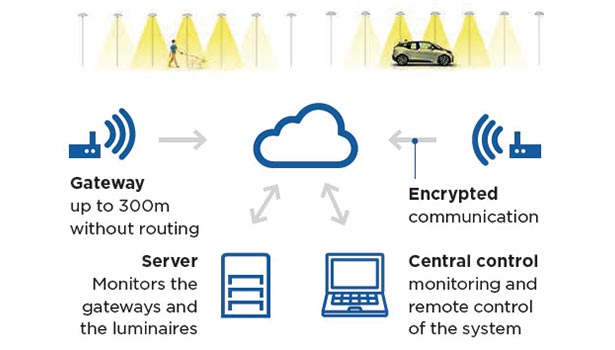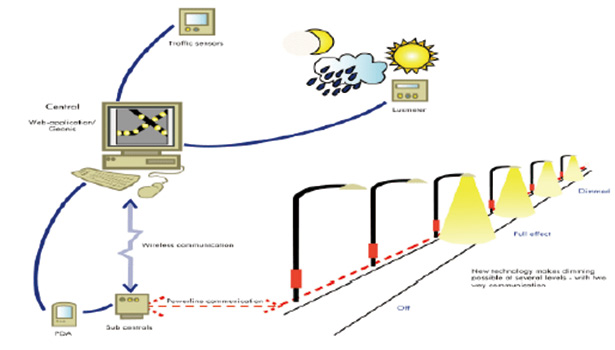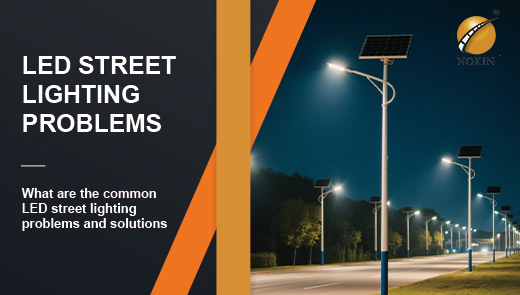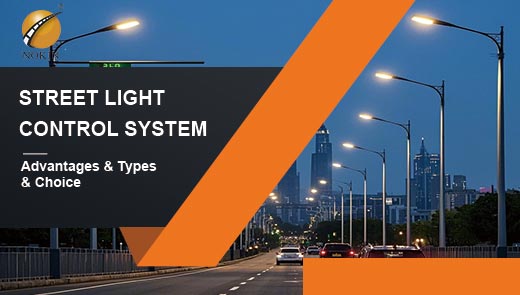Some Things about Street Light Control System
The importance of street light control system is becoming more and more prominent in the present time when the urban infrastructure construction is continuously promoted. It is not only related to the quality of urban night lighting, but also closely linked to energy saving, environmental protection and the intelligent level of urban management. In this paper, we will discuss the street light control system in depth to help readers fully understand this key area.
Advantages of street light control system
The most significant advantage of the street light control system is its effective control of energy use and carbon dioxide emissions. Through selective dimming of urban areas, roads or specific lighting fixtures, excessive lighting can be avoided. Taking the intelligent street light management system as an example, the system can realize a long-lasting energy saving effect of up to 70% per year, which not only saves a large amount of power resources for the city, but also significantly reduces carbon emissions and plays a positive role in promoting environmental protection.
From the perspective of economic benefits, energy savings are directly translated into lower costs, reducing the city's financial burden in public lighting. At the same time, the reduced carbon emissions are also in line with the global trend of combating climate change, and enhance the city's image of sustainable development.
Type of street light control system
Photocell switch
A photocell switch, also known as a light sensor switch or day/night sensor, is a device capable of automatically controlling the switching of street lights according to the availability and brightness of natural light. This automated operation eliminates the need for human intervention and greatly improves the convenience of street light management. If the street light is not equipped with a photocell switch, it needs to be operated manually through the main switch, which undoubtedly increases the labor cost and management difficulty.
The working principle is based on the connection between the sensor head and the street light power dimmer switch. The photosensitive electronic components on the sensor head will change the voltage or current value according to the brightness of the natural light, and when a specific threshold is reached, the sensor switch will change the current or voltage accordingly, thus controlling the street light power supply to turn on or off the LED light source.

For installation, 3 - pin Nema, 5 - pin Nema or 7 - pin Nema sockets are available to meet outdoor waterproof requirements. When installing, you need to make sure that the photocell switch can receive natural light properly, and clean its surface regularly to prevent foreign objects such as leaves from affecting its sensing effect.
In terms of cost, an optical switch and waterproof base typically costs around $6. But from a factory perspective, installing a photovoltaic switch involves additional processing, such as cutting holes in the back of the streetlight housing, so the total cost rises to $8 - $10.
In actual use, the photovoltaic switch may also have some failures. For example, when a solar streetlight is installed near a highway, dust that accumulates over time may cover the sensor head and prevent it from accurately detecting natural light, thus prolonging the streetlight's illumination time. In addition, shading by leaves or surrounding buildings may cause the streetlight to be turned on by mistake during the day, while external light sources such as car lights shining onto the sensor head may cause the streetlight to be turned off by mistake at night.
Timing dimming control system
Timing dimming control system is a functional module of street light power supply, which can run according to the pre-set time and brightness mode. For example, in the first 6 hours after the street light is turned on, i.e., during the peak traffic flow period, the LED power can be set to 100% to ensure sufficient illumination; and in the 6 - 10 hour time period at midnight, the LED power is lowered to 50% to achieve energy saving. This mode starts timing from the moment the street light is turned on, but cannot automatically adapt to seasonal changes brought about by the sunrise and sunset time change.
However, some brands of timed dimming control systems have automatic adjustment features, such as Philips and Osram. They are able to automatically adjust the dimming point at midnight according to the sunrise and sunset of the previous two days, so that the lighting time of the street light is more in line with the actual demand. The lighting schedules for street lights in different seasons are as follows:
|
Date |
Sunset (Activation) |
Lighting Curve |
|
|
|
|
100% |
50% |
100% |
|
|
January 1st |
17:05 |
17:05 - 23:56 |
23:56 - 03:56 |
03:56 - Sunrise |
|
April 1st |
19:24 |
19:24 - 23:58 |
23:58 - 03:58 |
03:58 - Sunrise |
|
July 1st |
21:02 |
21:02 - 23:57 |
23:57 - 03:57 |
03:57 - Sunrise |
|
October 1st |
18:33 |
18:33 - 23:43 |
23:43 - 03:43 |
03:43 - Sunrise |
However, there are obvious shortcomings in using only timed dimming control. In special weather conditions such as rainy days, if the natural light is too dark during the day, the street light cannot be turned on in time due to the limitation of the timer setting; and since the sunrise and sunset times change with the seasons, the timer setting of the timer dimming is fixed, and cannot be adjusted according to the actual situation. Therefore, it is usually necessary to combine the light control switch with the timed dimming function to realize the street light automatically adjusts the dimming plan according to the seasonal changes.

Smart control system
Smart control system is an advanced system that can remotely control, monitor and manage each street light. It realizes the connection between the center of the municipal street light and the on-site remote distributed RTU (remote terminal unit) through the GPRS/CDMA mobile communication network. The system can monitor the operation status of each street light in real time, including voltage, current, power, power factor, power consumption and lamp failure data.
The Smart control system has significant advantages in reducing labor costs. Due to the wide distribution and large number of street lights, the traditional manual inspection and replacement of lamps and lanterns need to invest a large amount of cost each year. The Smart control system can significantly save labor, management and vehicle inspection costs.
In the traditional clock control mode, the time setting of the clock controller needs to be adjusted regularly, due to limited manpower, the adjustment cycle is usually 1 - 2 times / month, each adjustment will produce about 15 minutes of error, resulting in an average of about 30 minutes of street lamps turned on every day, resulting in a waste of energy, while the Smart control system avoids this problem.
In addition, the Smart control system can automatically adjust the brightness of street lights according to the road traffic conditions, which can save 30% - 40% of electricity expenditure, and also eliminate abnormal lighting during the day, saving a lot of manpower and resources, and reducing considerable costs. However, the Smart control system also has the disadvantages of high cost and relatively complex operation.

Comparison of different control systems
In order to more intuitively understand the characteristics of different street light control systems, the following table form of time switch, photocell switch, timed dimming and Smart control systems for comparison:
|
Control Type |
Advantages |
Disadvantages |
|
Time Switch |
Commonly used, widely applied |
Requires manual operation, cannot fully adapt to seasonal changes |
|
Photovoltaic Cell Switch |
Plug - and - play, high degree of automation |
Incurs additional costs (photovoltaic cell switch + NEMA socket) |
|
Timed Dimming |
Energy - saving without additional costs |
Limited intelligence level, but lower - cost than Smart control systems |
|
Smart control system |
High level of intelligence, powerful functions |
High cost, complex operation |
The ideal program and conclusion
From a comprehensive point of view, the combination of photocell switch and timed dimming is a more ideal solution. This combination is basically able to realize the main functions of the intelligent street light control system, although it is unable to realize advanced functions such as real-time monitoring and fault alarm, but it has obvious advantages in terms of the cost of lamps and maintenance costs. Under the premise of focusing on energy saving and cost-effectiveness, this solution is worth promoting and applying.
Intelligent street light control system plays a key role in improving urban energy efficiency and realizing intelligent lighting management. Despite the current cost and operational challenges of Smart control systems, their advantages in energy saving, environmental protection and intelligent management make them a future trend in the development of street light control systems. With the continuous progress of technology, it is believed that intelligent street light control systems will play a greater role in urban construction.




